Tabriz Blue Mosque; Dazzling Antiquity
The Blue Mosque (Pers. Masjed-e kabud), also known as Masjed-e Moẓaffariya, is a dazzling 15th century monument in city of Tabriz, East Azerbaijan Province of Iran. Tabriz Blue Mosque counts as one of the most lauded Tabriz attractions.
What makes Blue Mosque architecture so unique is its illustration of the artistic genius of its creators in the Turkman ruled Tabriz (1351-1469 ). Blue Mosque History, hence, reveals the story behind its uniqueness among its Iranian counterparts. Blue Mosque Opening Hours are cited below.
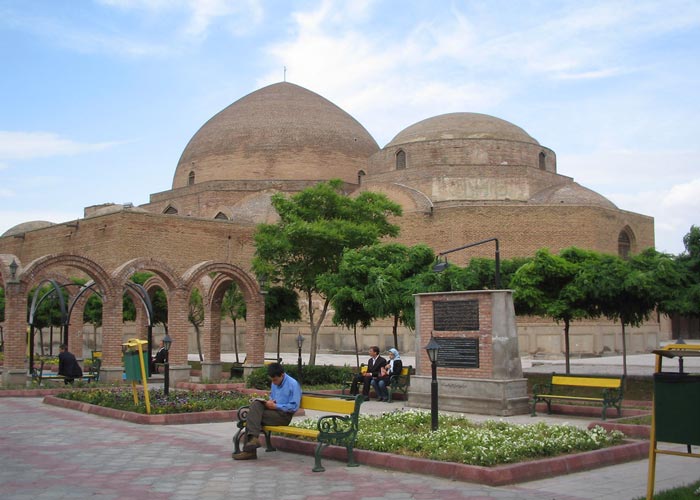
Tabriz Blue Mosque by @elishka on flicker
If you ever wish to visit Iran one day, we, as an Iran tour and travel agency, invite you to browse through our Iran travel packages:
>> Iran Tours 2020 & 2021 (Click Here)
#1 Tabriz Blue Mosque History
Blue Mosque History : Tabriz Blue Mosque was built during the reign of Qara Qoyunlu Dynasty (1351-1469) of Turkman origin. The Blue Mosque belonged to a grand complex, Mozaffariya, funded by Khatun Jan Begom, wife of ruler of the time, Jahanshah.
Completed in 1465, according to the inscription on the main portal, the building complex served multiple functions with a Sufi convent, a Qanat, a garden and perhaps a madrasa; yet only the mosque and mausoleum have remained. The queen and her children, and allegedly Jahanshah, were buried in the mausoleum; However, only traces of 3 tombs are found in the mausoleum’s crypt.
After the death of Jahanshah and his wife, their daughter Saleha Khatun supervised the construction work. When the Āq Qoyunlu, again of Turkman origin, conquered Tabriz and specially during the reign of the Aq Qoyunlu ruler Yaʿqub (r. 1478-90), the mausoleum’s cupola and its main parts were completed.
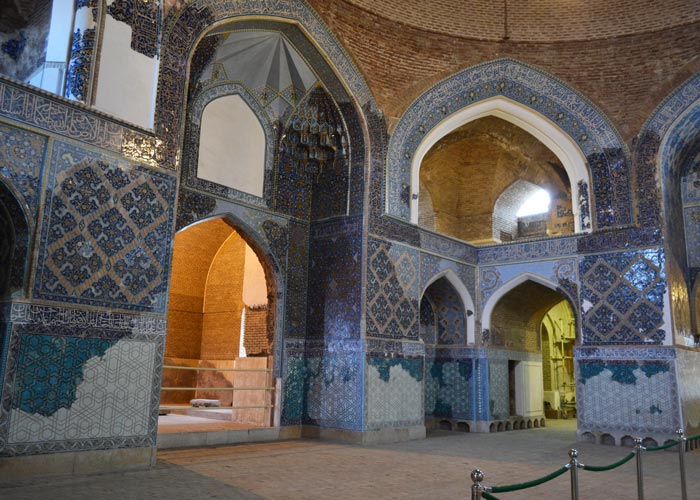
Photo by @Alan-Cordova on flicker
Tabriz Blue Mosque was functional during the Safavid era (1501-1732), when Tabriz was the first capital between 1501 and 1555. The city was looted by the Ottoman Empire upon the defeat of Safavid in the battle of Chaldiran (1514). At least 8 carpets of Tabriz Blue Mosque were taken to Istanbul and offered to the newly built Gazi Hüsrev Bey Mosque in Sarajevo, by Salim I. What is more, violent earthquakes devastated the Blue Mosque between the 16th and 18th centuries, and the mosque was completely abandoned in 17th century.
In the 20th century (1973) the monument was finally restored by rebuilding its cupolas and missing walls. While the framework has been repaired, the interior remains a work in progress as craftsmen piece together what once was, including segments of finished tiles.

Entrance Portal of Tabriz Blue Mosque by @Terry Feuerborn
#2 Tabriz Blue Mosque Architecture
Tabriz Blue Mosque Architecture : The architecture of Tabriz Blue Mosque is distinct from the typical Iranian mosques, when it comes to its floor plan, which is T-shape. A similar mosque to its plan, is the Timurid Mosque of Shah in Khorasan Province, Eastern Iran. The T-shape floor plan, the dome covering the whole roof area, for example, point to artistic connections to the contemporary Ottoman mosques, such as Green Mosque of Bursa. Not an arbitrary connection, when among the craftsmen who worked on Green Mosque’s decoration were ʿAli b. Hājji Ahmad al-Tabrizi and others, whose names suggest their Iranian origin. They were also employed for many other 15th-century building projects in the Ottoman Empire.
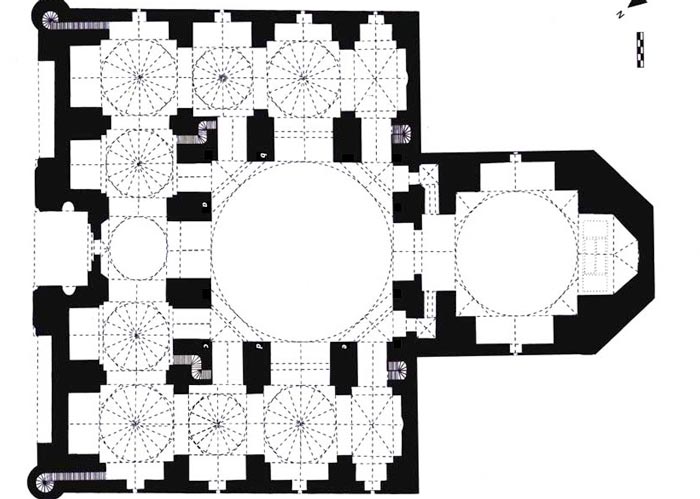
Plan of Tabriz Blue Mosque
#1 Building Material of Blue Mosque :
Blue Mosque stands as fired-brick structure on a stone foundation. Alabaster was used for the mausoleum’s dado and the 3 Mihrabs. Windows of the gallery, and the door of the mausoleum were probably mounted with Alabaster, a fragment of which is still preserved. Jean-Baptiste Tavernier (1605) cites the alabaster slabs created a warm red light inside the building.
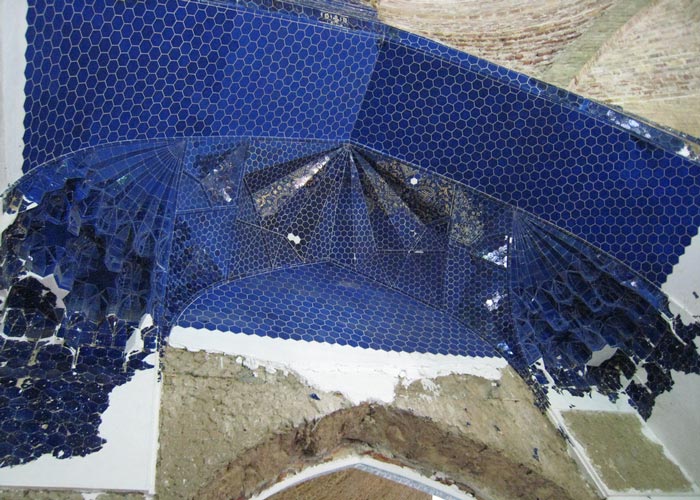
Photo by @Jo on Flicker
#2 Spatial Organization of Blue Mosque :
The main entrance opens to an antechamber forming the center of a gallery that surrounds the central dome chamber on three sides, two arm ending in a vault above 2 Mihrabs. The gallery supports 9 cupolas. The central great dome (h. 22 m) rests on eight arches. In the corner pillars there are four upper galleries. The central dome adjoins the mausoleum on the south side through a wooden door, where a smaller dome covers the chamber.
#3 Decoration of Blue Mosque :
While much of the architectural ornament of Tabriz Blue Mosque has vanished, the remaining decoration reveals a high level of craftsmanship. Exquisite tin-glazed tilework and calligraphy (Tolt and Kufic) are integral decorative features of the Blue Mosque .
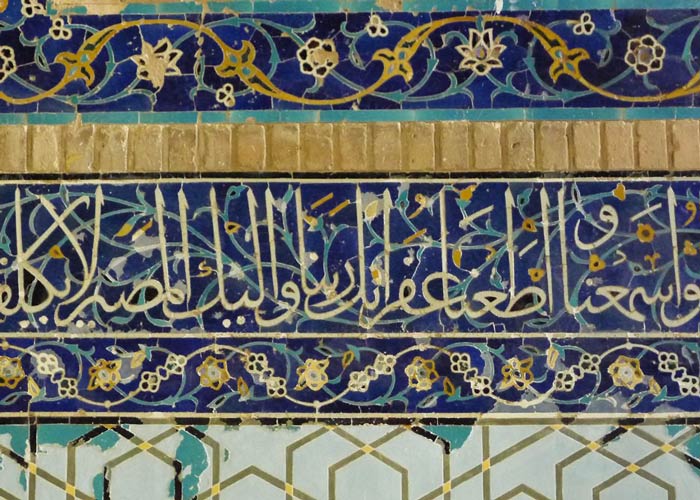
Photo by @shiva1o8 on Flickr
The whole monument was decorated with prime quality tile mosaics of delicate floral motifs, and brick for relief effects (typical of art in Timurid era). Perhaps, the multicolored tilework with the outstanding blue shades are behind the mosque’s appellation. A a wide range of shades, from cobalt blue, turquoise, white, brown, and black to green, yellow, almost red, and gold fascinates the eyes.
Hexagonal Cobalt blue and gilded tiles covered the mausoleum’s wall and dome. The Cobalt blue used in the Blue Mosque stands out from the typical turquoise blue of Timurid Architecture.
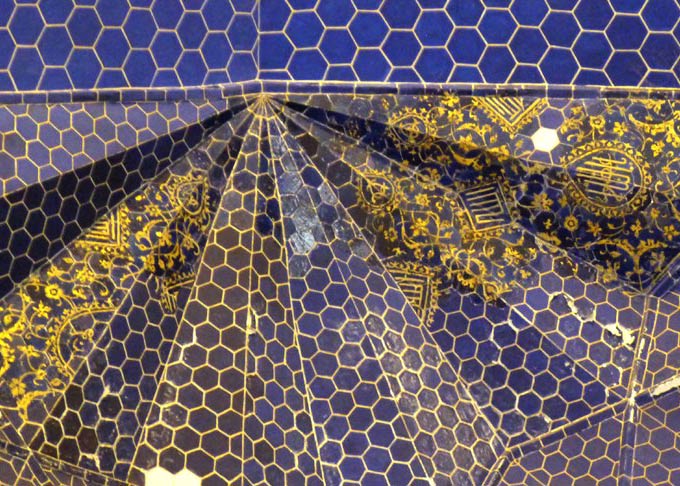
Photo by @shiva1o8 on Flickr
The exterior walls of the Blue Mosque were covered by 5 × 5 cm blue-and-white tiles, adorned with a black line and painted in white on a dark blue ground. Blue-and-white tiles were not widely used in 15th century Iran, so the Blue Mosque is an outstanding example of the art. These unusual blue-and-white ornaments demonstrate the prospering ceramic production in Tabriz.
Remnants of Luster tiles on the pishtaq columns are also an stellar feature of the Blue Mosque, as they were not widely used in the 15th century.

Photo by @Alan-Cordova on Flicker
You can also visit the official website of the monument at www.mozafariyeh.ir
Tabriz Blue Mosque Opening Hours
Tabriz Blue Mosque Opening Hours are 9 to 18:30, everyday
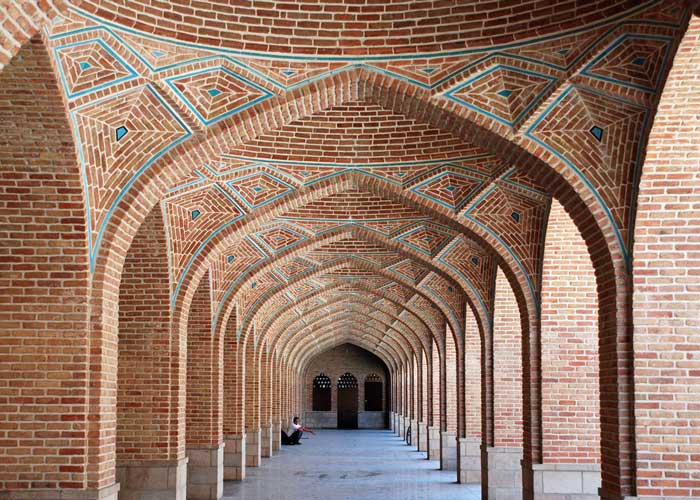
Photo by @babak-tgzd on Flicker
Tabriz Blue Mosque Nearby Attractions
- Arg-e Alishah (Tabriz Citadel) – 1.4 km
- Tabriz Bazaar – 2 km



1 Comment
Chenlieu · July 7, 2019 at 11:23 am
The monument is dazzling even as the relics of a once grand mosque!